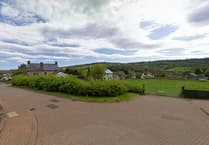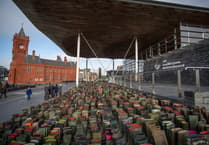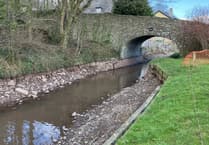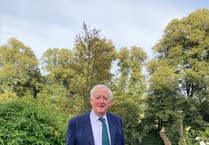Nestled in the heart of Wales, the Brecon Beacons National Park has been quietly undergoing a transformation, spurred on by the urgency of the climate and biodiversity emergency.
Today (Monday) the Brecon Beacons National Park was formally renamed as Bannau Brycheiniog National Park - or informally as “the Bannau”.
In response to the urgent need for a new way of being amid the climate and biodiversity emergency, the Park has announced a bold management plan and subsequent change of name.
The move is a significant shift in the way the National Park works, recognizing that putting a fence around nature and preserving it is no longer effective. Instead, the management plan focuses on five outcomes, envisioning the world we need to create and what our future landscape will look like if we are able to successfully adapt and thrive.
The new name, Bannau Brycheiniog, has a unique meaning and reflects the Park’s history. “Bannau” is the plural of “ban” which means peak, while “Brycheiniog” refers to the old kingdom of King Brychan, meaning “the peaks of Brychan’s kingdom”.
The decision to rename the National Park was made for several reasons. Firstly, the symbol of a carbon-emitting beacon does not fit with the ethos of the Park. Secondly, the Central Beacons mountain range covers a far smaller proportion of the Park’s geography than the historic kingdom of Brycheiniog. Thirdly, the National Park is committed to promoting the Welsh language. Lastly, there is no evidence that burning beacons ever existed on the Park’s summits.
The Brecon Beacons National Park was created during post-war social reform to give the “working man” somewhere to spend paid holiday. However, the new management plan from the Bannau Brycheiniog leadership recognises the need for intervention if we are to deal with what lies ahead.
The name change marks a significant step forward for the National Park and reflects the Park’s commitment to promoting a new way of being. The National Park has undergone a rebrand and reclaimed its old name for a new way to be. The Park’s management hopes that this name change will better reflect the Park and the world we live in today.
While the Park’s leadership does not expect people to use the new name, they are excited to share the new vision for the National Park.
The Park unveiled its new management plan on Monday, on the 66th anniversary of its designation.
The senior team and the development of the plan has been largely led by women; Catherine Mealing-Jones, Chief Executive; Simone Lowthe-Thomas, Director for Nature Recover and Climate Change; Helen Lucocq, Head of Policy and Jodie Bond, Head of Communications. The Park’s Chair, Aled Edwards, and Director of People and Place, Gareth Jones have also been heavily involved.
The plan is based on the Doughnut Economics model and focuses on five outcomes that will help the Park achieve its goals.
The first outcome is to reach net-zero greenhouse gas emissions across the Park by 2035. The second is to ensure water resources and water environments are clean, safe, and resilient by 2030. The third is to create a nature-positive Park by 2030. The fourth is to meet the health, economic, recreational, and residential needs of the people of the National Park by 2028. The fifth is to create thriving and sustainable places celebrated for their cultural and natural heritage.
Read more about the change in this week's paper




